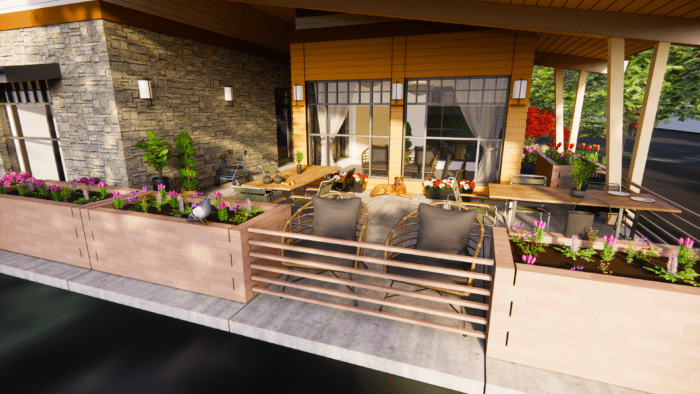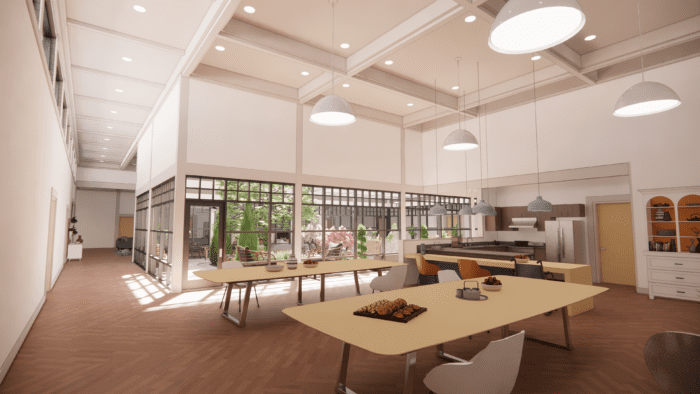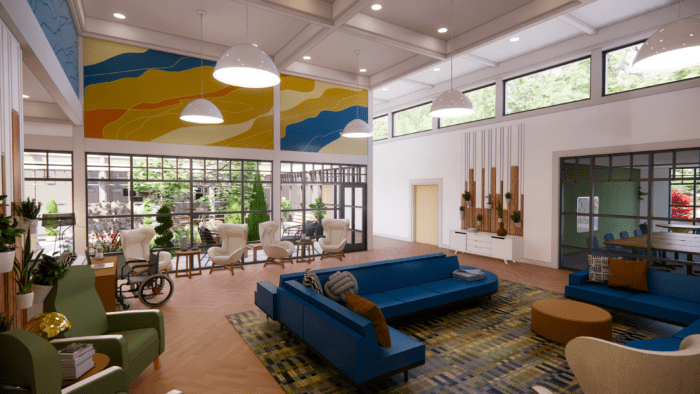The design approach of a skilled nursing facility focuses on elevating daily living by creating home-like environments.
Architecture should serve everyone. The BCRA/Sage Architectural Alliance project team believes beautiful, purpose-built spaces should be attainable even for the most marginalized populations—especially for the most marginalized populations.
This inclusive philosophy was embodied in a recent case study for a skilled nursing facility (SNF), one that provides support in a residential setting to individuals with intellectual and developmental disabilities. Because these populations rely on skilled nursing to thrive, the facility needs to do more than “house” people. It should also endeavor to elevate quality of life. This dignity-first approach strives to incorporate an experience that nurtures better outcomes—not just for residents but for staff as well.
Since adults live and learn critical skills at the facility, we wanted their spaces to be safe, rooted in community, and full of hope. Simply put, we wanted their spaces to feel like home.

The design took three tracks to reach this goal. First, we designed a place where ownership and comfort can be achieved in equal measure. Second, we considered connections to nature—a benefit proven to improve well-being. Third, we provided dedicated areas to build community.
Insight into the everyday user experience is invaluable to every successful project, so we solicit feedback from as many stakeholders as possible. In this case, the nursing staff of this facility wanted to separate the residential bedrooms from the circulation spines. This separation allows the facility to feel less institutional and provides a stronger sense of home, giving the residents comforting spaces they can treat as their own. The thoughtful layout also adds to the sense of belonging and creates a deeper connection to self, an important part of restoration and healing in a supportive environment.
The complex was subdivided into six pods to support the idea of a “community within a community.” Amenity spaces were co-located to form a “Village Center” for exercising/therapy, eating, reading, and socializing.

The open layout allowed for clear visibility, a priority for both supervision and for reinforcing the idea of connecting to the outside and to each other. To further reinforce this concept, the staff lounge and respite areas are located at the junction between the spine corridor and housing clusters, places that offer convenient proximity, ample daylight, and beautiful views.
Starting with the idea of home, access to nature, abundant comfort, and areas to gather, three conceptual design opportunities for the SNF were identified and became main drivers to the design approach:
Natural materials, bringing connections to nature indoors, and exposed structural rhythms—as well as other representations of nature—are all part of a biophilic strategy for a restorative environment that enhances well-being.(1) Places for familiar and calming art were designed with intention to ensure a positive and relaxing environment. Expressions of art to be incorporated into the design of the built environment were also given considerable thought, such as the wall protection materials and clouds that delineate public spaces.

Aesthetics in the built environment have traditionally been concerned with harmony, proportion, and scale. But to truly elevate the built environment in today’s world—to use buildings to improve lives—we must dig deeper into what people really need. Elevating the quality of life through design has been a passion of BCRA and the clients we work with. Our approach to rethinking institutional settings starts with the user experience, channeling empathy to design for everyone and for every space. By putting people first, our design begins with the idea of respect and ends with the idea of home.
(1) “Biophilic Healing Index” Nikos A. Salingaros, University of Texas, Jan 2019